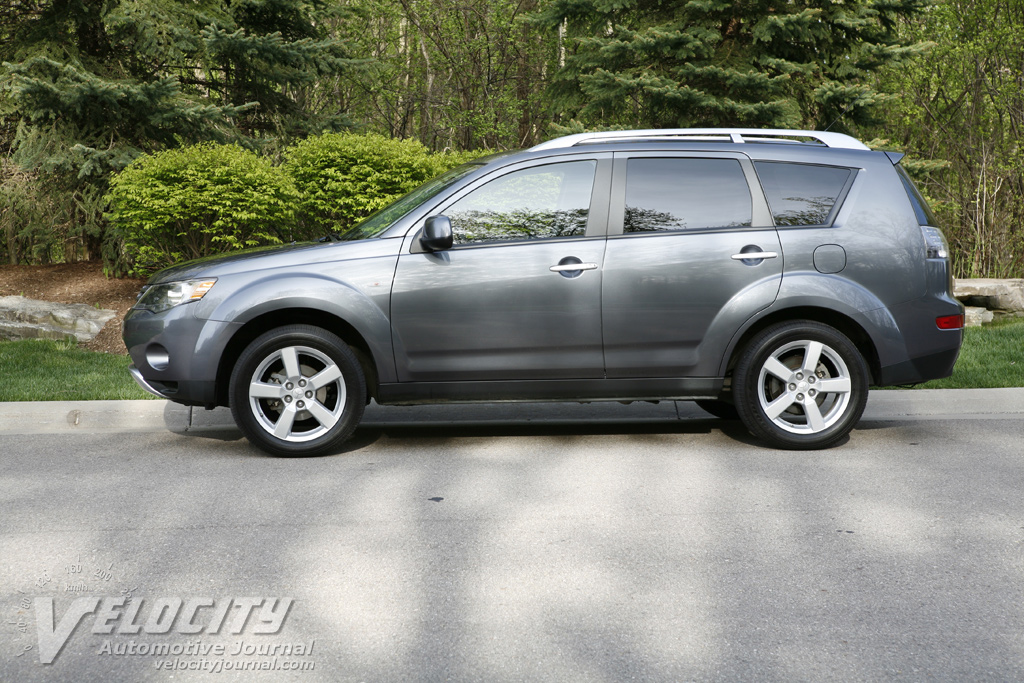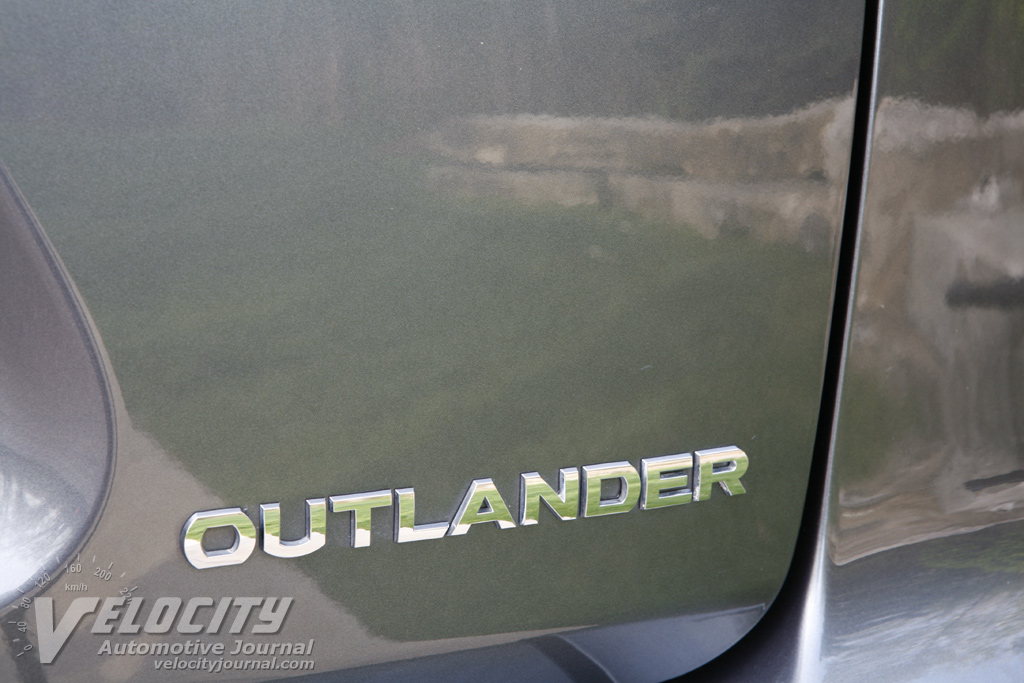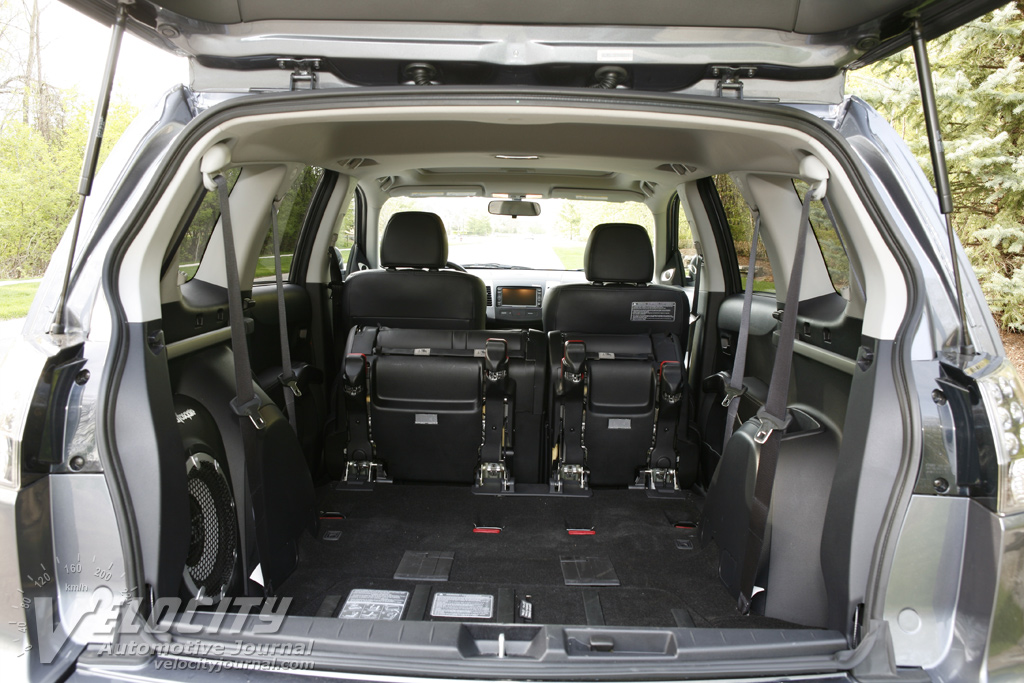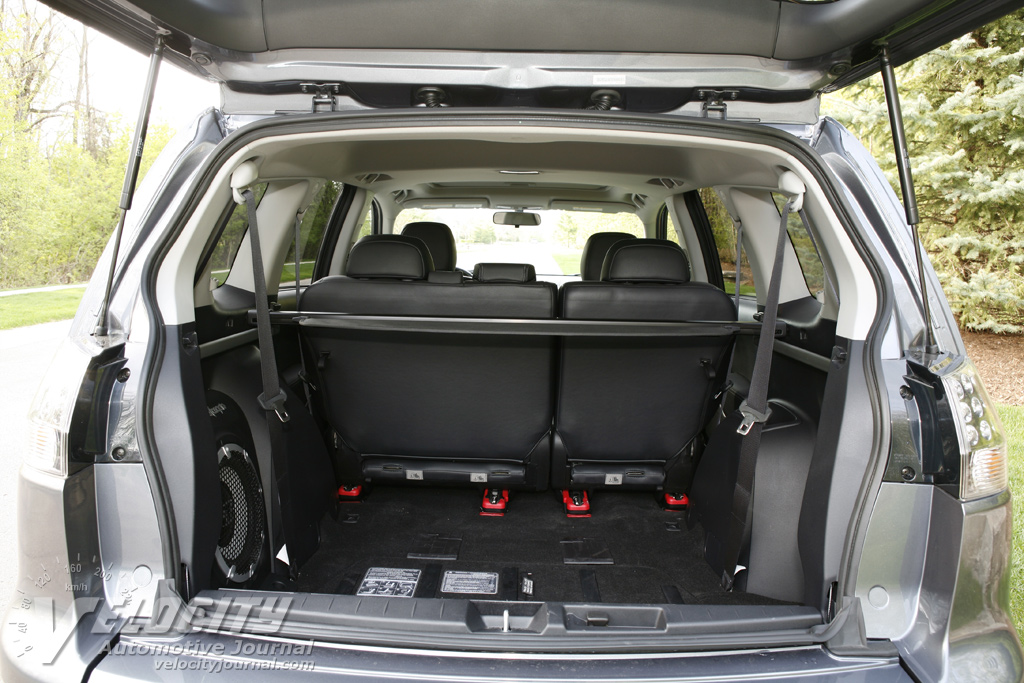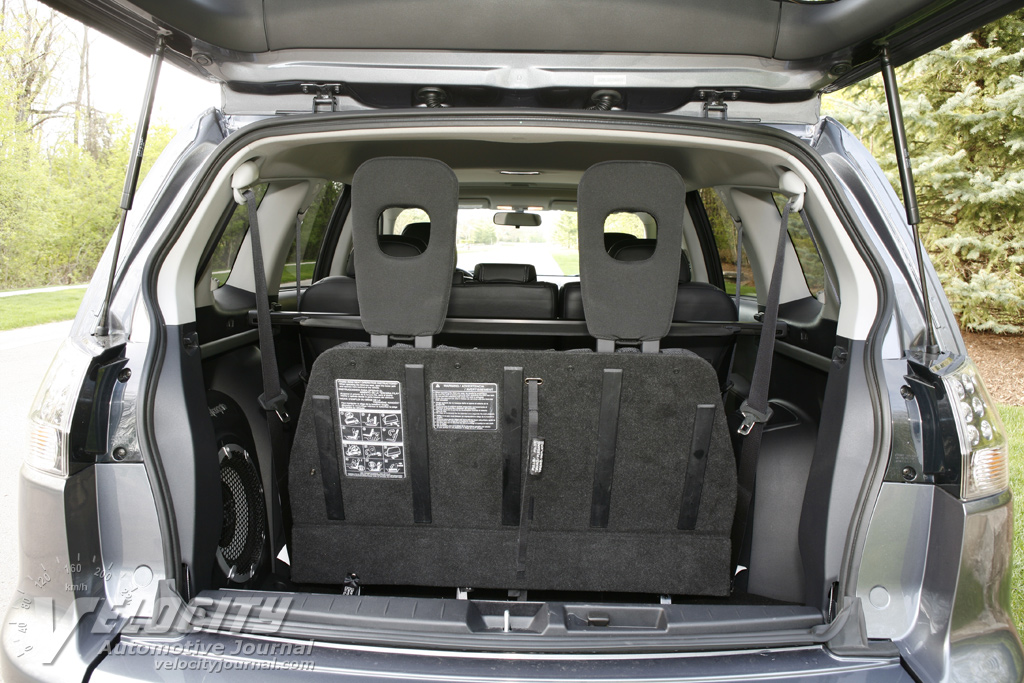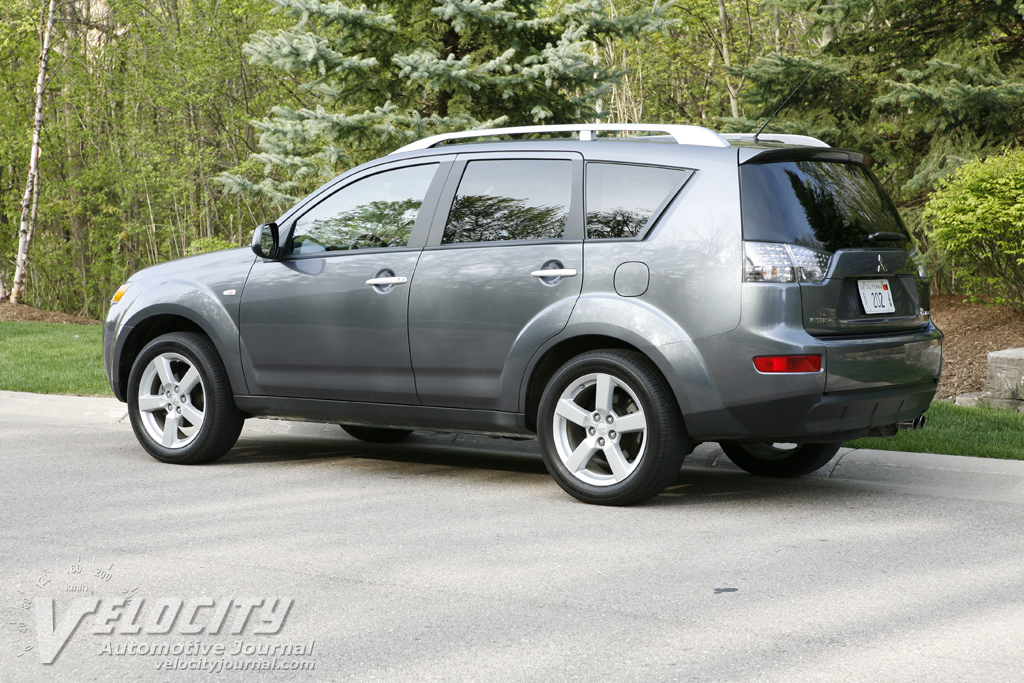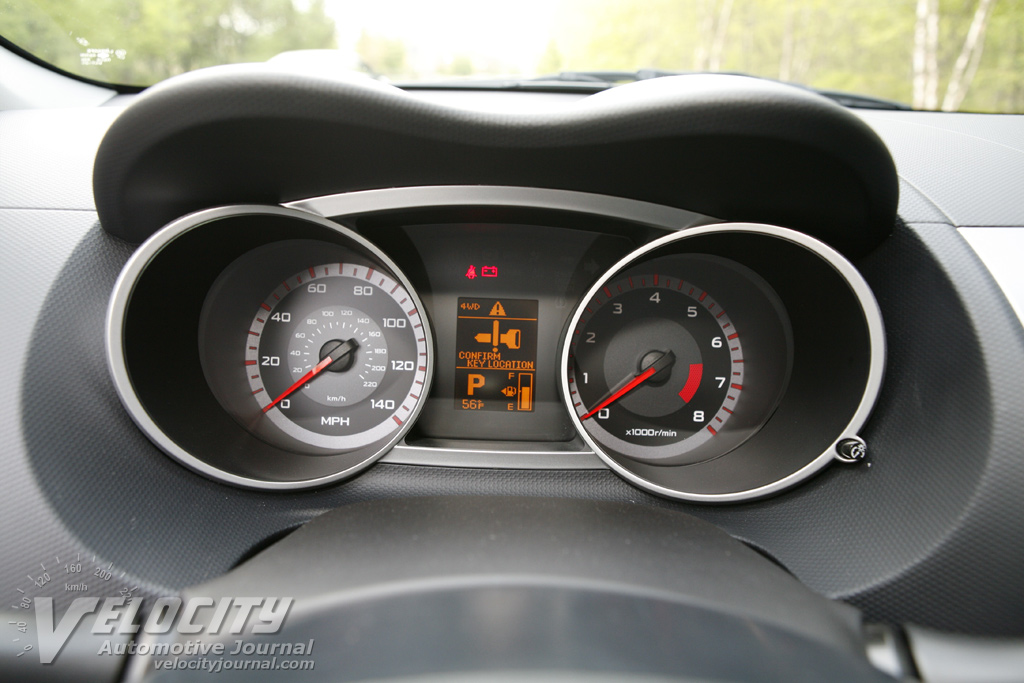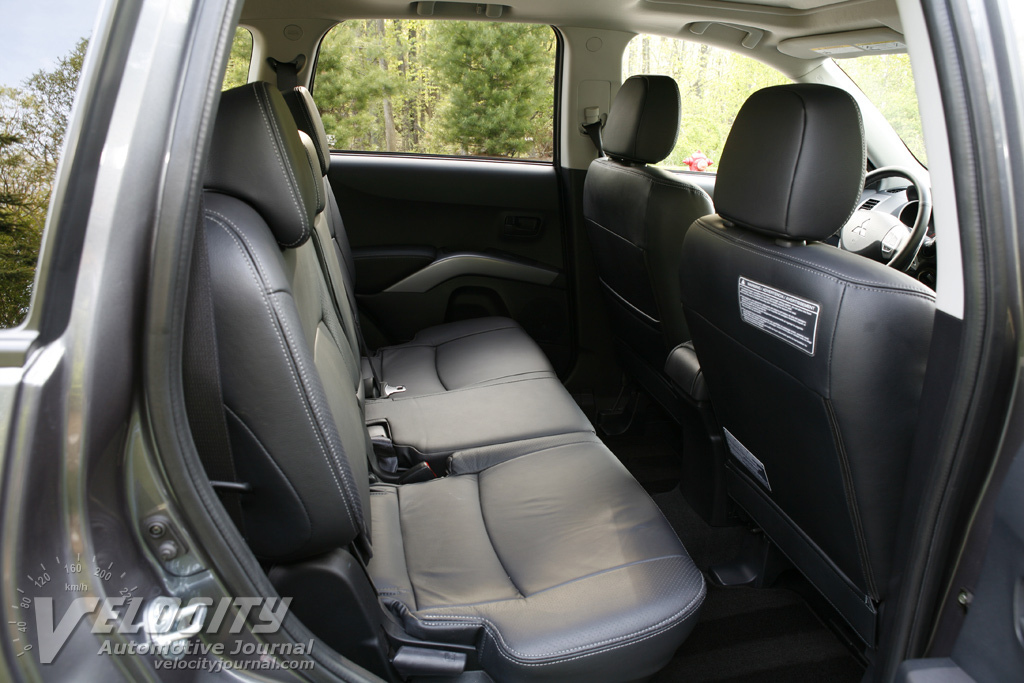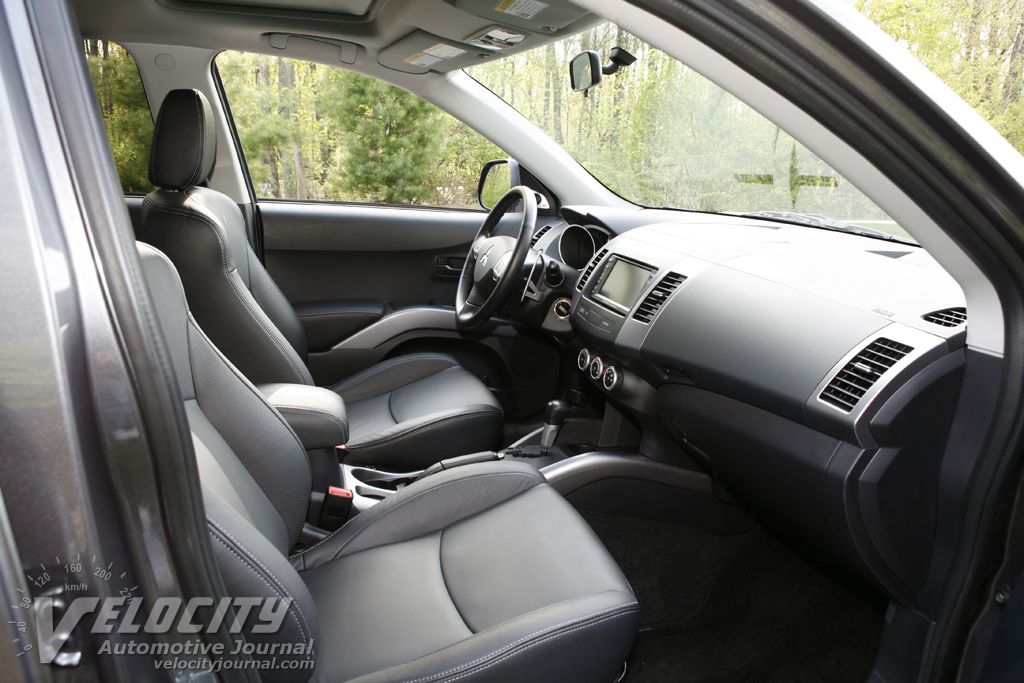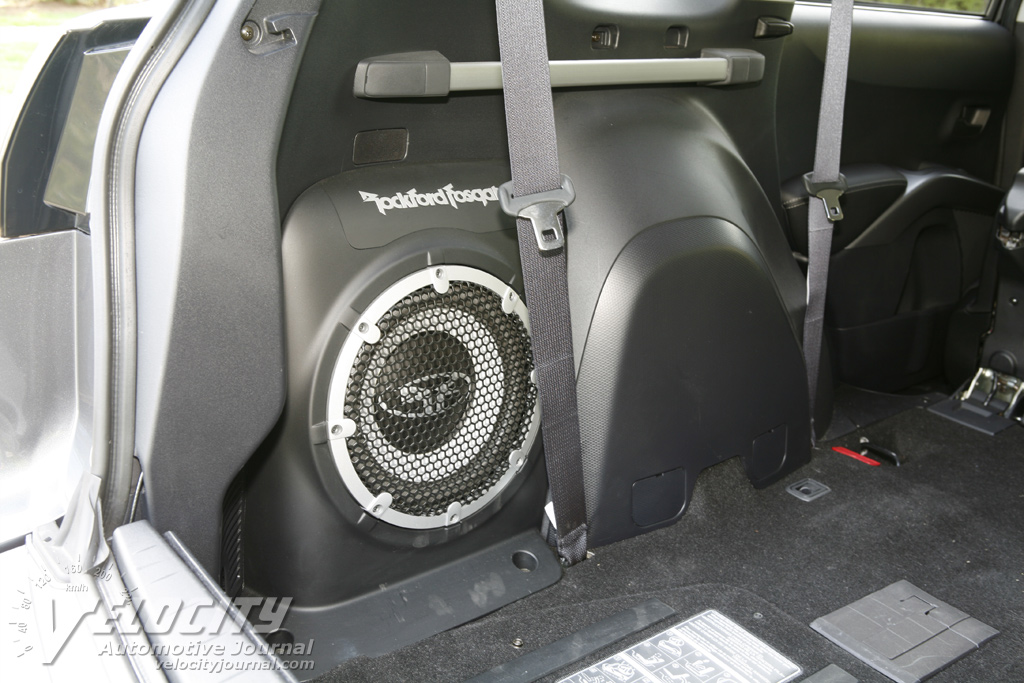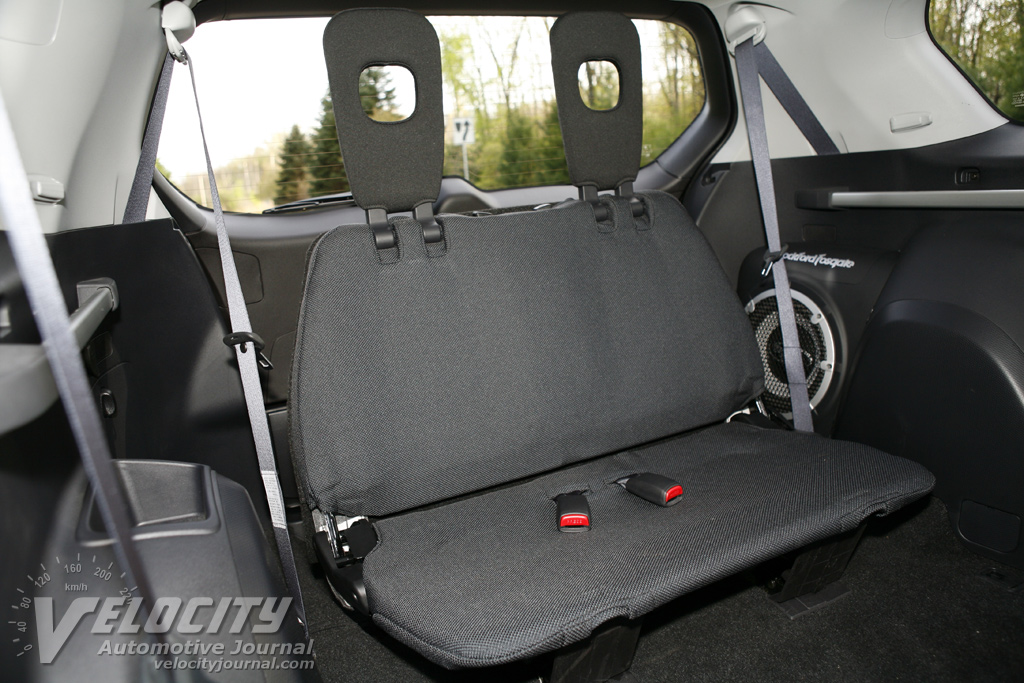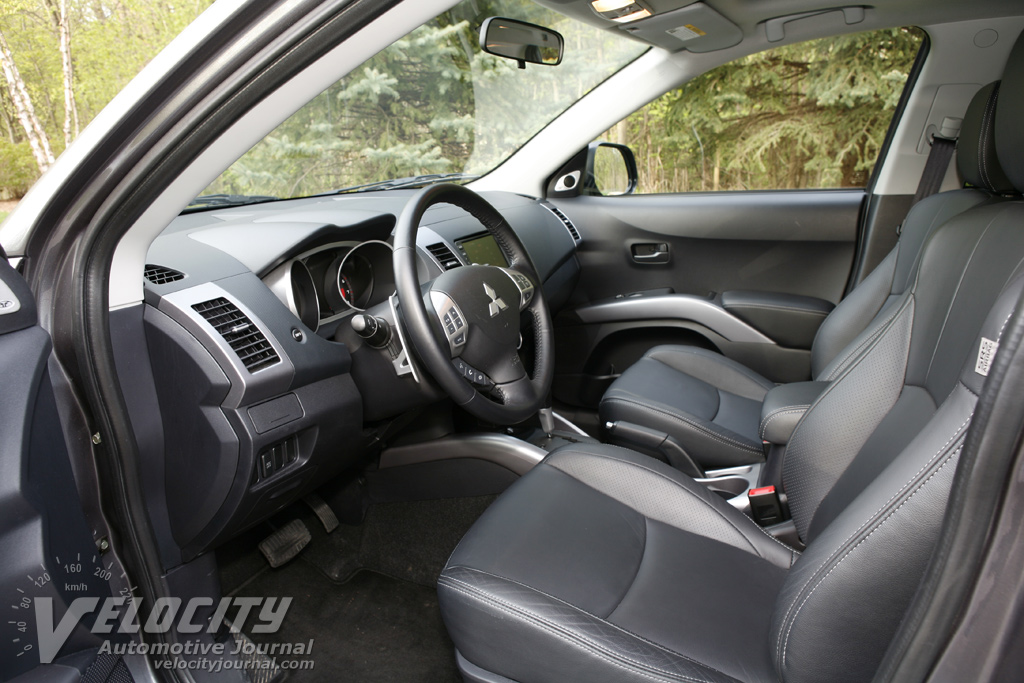2007 Mitsubishi Outlander XLS 4WD
05/07/2007
Shahed Hussain
For the 2nd generation Outlander, Mitsubishi rethought the entire vehicle. The compact SUV segment is jammed with entries from nearly all the big manufacturers, so the latest Outlander had to be competitive on all fronts. While the first Outlander was too small and underpowered for American tastes, Mitsubishi stretched the 2007 Outlander for an optional 3rd row seat, and included a standard 220-bhp 3.0L V-6. Sharp, chiseled styling sets the Outlander apart from its mostly nondescript competition. As a result of these updates, this Mitsubishi bears no resemblance to its boring predecessor.
The Outlander model lineup starts with the base ES, midlevel LS, and finally the range-topping XLS. Pricing for the Outlander ES and LS 2WD begin at $21,370 and $22,410, respectively. Optional full-time 4WD, a rarity in this class, adds $1,360 to the LS and XLS models (not available on the ES). We tested the premium XLS 4WD, which starts at $25,010. Our loaded test vehicle was equipped with the $1,580 XLS Sun & Sound Package (includes a 650-watt DVD/CD/MP3 Rockford Fosgate audio system w/subwoofer, Sirius satellite radio, and a power sunroof), $1,600 Luxury Package (leather seats, xenon HID headlights, heated front seats), and the $1,800 Navigation Package (hard disk-based navigation system, 7" LCD touch screen, trip computer, digital music server). Foglights ($315) and floor mats ($50) were the remaining options. The grand total for the Outlander XLS is $30,975, including the $625 destination charge. The widest selection of option packages is available on the XLS, while the LS and ES models have more limited choices. Value-oriented buyers should consider the Outlander LS 2WD or 4WD, which offers a good balance of features vs. price. The premium XLS is for customers who desire more luxury, as well as the latest infotainment technology.
Since the Outlander rides on a completely new platform, Mitsubishi used the opportunity to completely restyle its entry-level SUV. Crisp angles, raised wheel arches, and a scowling front fascia with quad round headlamps give the new Outlander a far more dynamic appearance than before. Foglights in the front bumper double as daytime running lights. LED taillights framed in dimpled chrome-plated reflectors resemble the more expensive Lexus RX350. Truck-like exterior side view mirrors minimize blind spots. Fashionable side marker lights are a nod to the Outlander's Japanese origins. A beefy roof rack can stow extra cargo on the aluminum roof. Dual stainless steel exhaust tips exit from the lower rear bumper fascia. XLS models get attractive 18-inch alloy wheels shod with P225/55R18 Goodyear LS2 tires. Outlander ES and LS models are equipped 16-inch wheels (alloy wheels for the LS) with P215/70R16 tires. All Outlanders come with standard 4-wheel disc brakes and 4-channel/4-sensor ABS. Brake rotors are ventilated 11.5" diameter (front), and solid 11.8" diameter (rear). Stability control is available on the Outlander XLS.
With a curb weight of 3,791 lbs., the Outlander XLS splits the difference between competitors such as the Mazda CX-7 4WD (3,929 lbs.) and the Honda CR-V EX-L (3,415 lbs.). Weight distribution for the Outlander XLS 4WD is 56.4/44.6 (% F/R), which helps minimize the typical understeer of nose-heavy compact SUVs. Towing capacity is 3,500 lbs. for 4WD models, while 2WD variants are restricted to only 2,000 lbs. EPA estimated fuel consumption for 4WD models is 19/26 MPG (city/highway). Choose the 2WD Outlander, and fuel consumption improves slightly to 20/27 MPG (city/highway). In our opinion, the traction and handling advantages of the 4WD system are worth the minimal increase in fuel consumption.
The Outlander's interior combines the latest high technology features with blatant signs of cost cutting. Textured gray and silver hard plastic covers nearly every surface. Door panels are simple grained moldings that look out of place in a $30K vehicle. In contrast, the leather-covered steering wheel and shift knob remind us that Mitsubishi did not skimp where it really counts. The 140-MPH speedometer and 8,000 RPM tachometer are housed inside individual pods; in between is a multi-function dot-matrix display that shows fuel level, transmission gear selection, drivetrain mode (e.g. 4WD), and outside temperature. A deep center console bin stows CDs and DVDs, and includes an auxiliary 12V DC as well as an 110V AC power outlet. A shallow secondary compartment above the bin holds smaller items. On the dash above the audio controls is another storage compartment for a mobile phone or sunglasses. The huge glove box will hold a 6-pack of Coke. Dual cupholders are located behind the gated shifter for the 6-speed automatic. Additional drinks will fit in the front door panel pockets. Round HVAC controls are easy to manipulate while driving, without distracting the driver. Outlanders equipped with the Navigation Package get a 7-inch LCD touch screen to control audio and trip computer functions. Press a button, and the articulating LCD screen flips down to reveal a CD/DVD slot. The audio system will rip CDs to store as MP3 files on the built-in 30 GB hard disk music server. The touch screen interface is complex, so we recommend that owners spend time understanding its many functions. To really impress passengers, put the transmission in "P" and insert a DVD to watch a movie in surround sound. The video display turns off while driving, but the movie audio continues to play through the speakers. With a ready supply of DVDs, the Outlander becomes a mobile movie theater, with superb sound from the 65-watt Rockford Fosgate audio system. XLS models are available with the Bluetooth wireless cellular interface, so users can pair up their mobile phones for hands-free calling. Mitsubishi also includes a remote control fob (FAST: Freehand Advanced Security Transmitter) that allows keyless entry and engine start.
Front seat accommodations are better than average. The bolstered seats are supportive and comfortable, with smooth perforated gray leather worthy of a luxury sedan. Although the driver's seat includes power adjustments, the passenger seat has manual controls. Both front seats will accommodate passengers up to 6' tall in reasonable comfort. Second-row passengers have limited headroom due to the sunroof, so anyone above 5'-10" will find his or her head brushing the headliner. However, the second row seats will slide back 3.15" and recline, so passengers can relax or nap. Amazingly, Mitsubishi managed to package a tiny rear bench that pops out of the floor (Outlander XLS only), although these cloth-upholstered seats are suitable for small children only. To access to the 3rd row seats, the 60/40 split rear seats will fold and tumble so that passengers can clamber back. We don't think that these miniscule seats will get any more than occasional use, but owners will be able to haul seven passengers in a pinch. The rear cargo area expands to 72.6 cu. ft. once the 2nd row seats flip out of the way. A 2-piece lower tailgate folds down to support items up to 440 lbs., or as a convenient table for picnics.
From a driver's perspective, the Outlander's powertrain is exceptional. The refined all-aluminum V-6 (220-bhp/204 lb.-ft.) and standard 6-speed automatic smoothly accelerate this SUV well past legal speed limits. No other compact SUV in its class offers a standard V-6/6-speed transmission combination. Although the torque peak is at 4,000 RPM, the 3-stage air induction and MIVEC variable valve timing system enhances low-end torque significantly. Mitsubishi includes steering wheel-mounted paddle shifters for the Sportronic(TM) automatic (XLS only). We didn't use the magnesium paddles much, preferring to let the smooth-shifting automatic change gears, or using the leather-covered console shifter in manual mode.
Mitsubishi notes that the Outlander has a full-time 4WD system usable on dry or wet roads, which is rare among compact SUVs. For sporty handling, Mitsubishi recommends that the 4WD system knob be set to the "Lock" mode. Torque split front-to-rear varies according to driving conditions. The "Lock" mode will divert up to 70% of engine torque to the rear wheels at low speed, while up to 40% of torque will be sent rearward on the highway. Select the "Auto" mode, and the 4WD system will reduce the rear torque output, and adjust the torque split more frequently. In practice, the 4WD system worked flawlessly, with no wheel spin or torque steer at full throttle. The Outlander corners with consistent mild understeer in 4WD, although in 2WD mode, understeer in more pronounced. According to Mitsubishi, leaving the Outlander in 4WD mode nets a negligible fuel consumption penalty. The fully independent MacPherson strut and multi-link rear suspension provides a compliant ride quality similar to mainstream sedans; yet the damper settings are just firm enough to minimize pitching on the highway. Front and rear stabilizer bars keep roll in check, but the Outlander will never be mistaken for a sport sedan. Wind and engine noise are mostly unobtrusive at speeds above 80 MPH, but the Eagle LS2 tires are noticeably noisy over concrete surfaces, although the din subsides over asphalt. Although the rack-and-pinion steering is light and accurate at low speeds, reduced power assist on the highway would enhance perceived directional stability.
The new Outlander is a significant leap beyond its uninspiring predecessor. Even though pricing is competitive with category benchmarks such as the Ford Escape, Honda CR-V and Toyota RAV4, the Outlander does offer a few distinctive advantages over its rivals. For instance, despite the Ford Escape's more authentic SUV styling, a less powerful V-6 and dated 4-speed automatic leave it trailing the more contemporary Outlander. Against its Japanese competition, the Outlander's interior design and materials fall behind the benchmark CR-V as well as the RAV4. While the V-6 RAV4 has more power (269-bhp), the Outlander counters with a segment exclusive 6-speed automatic, plus a more advanced full-time 4WD system. The CR-V doesn't offer an optional V-6 or full-time 4WD. Ultimately, it becomes a matter of priorities: does the Outlander's superior drivetrain and entertaining handling override its downscale interior trim? Although customers are the final judge of its merits, we think the new Outlander is a serious player in the compact SUV market.

